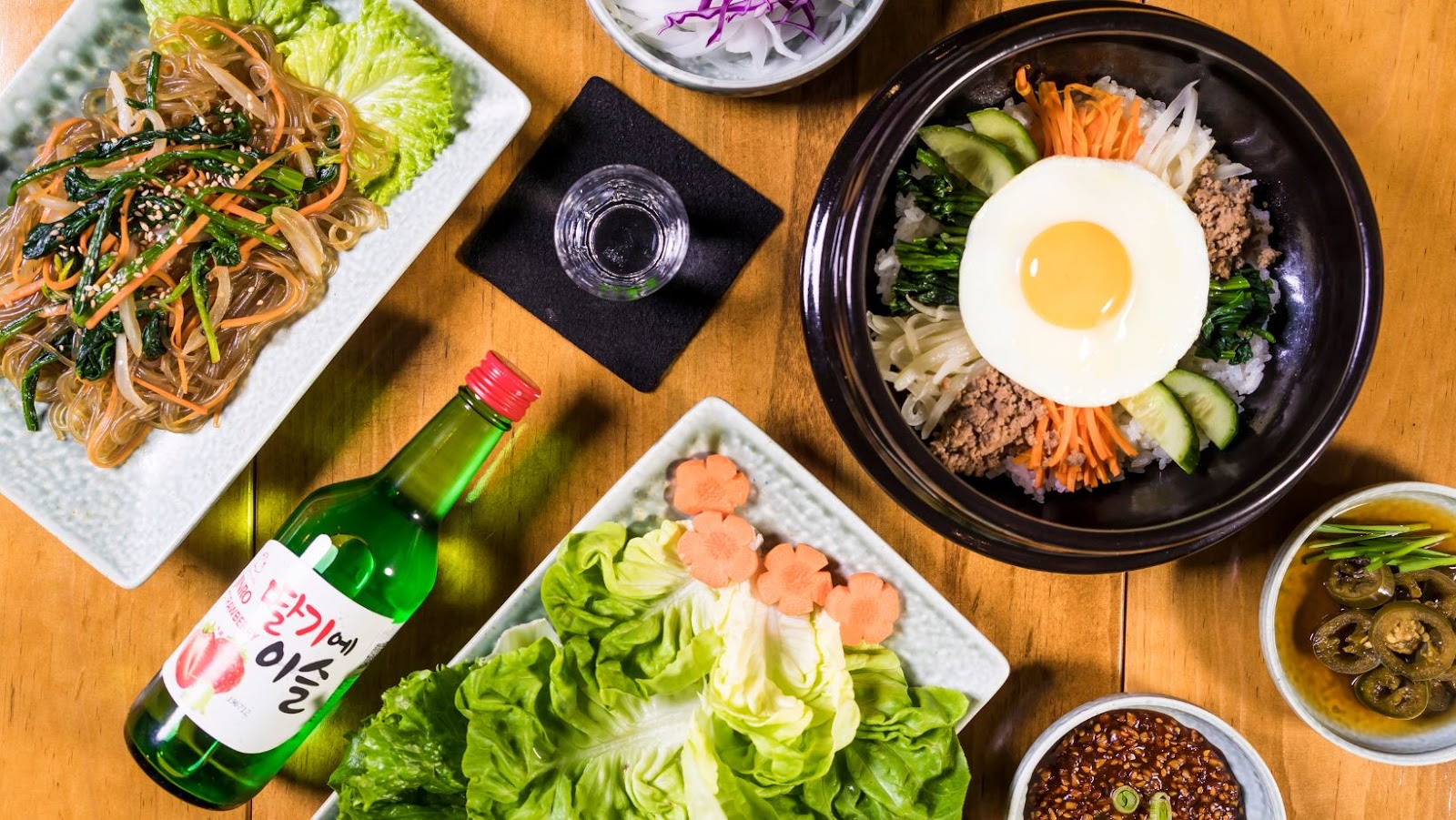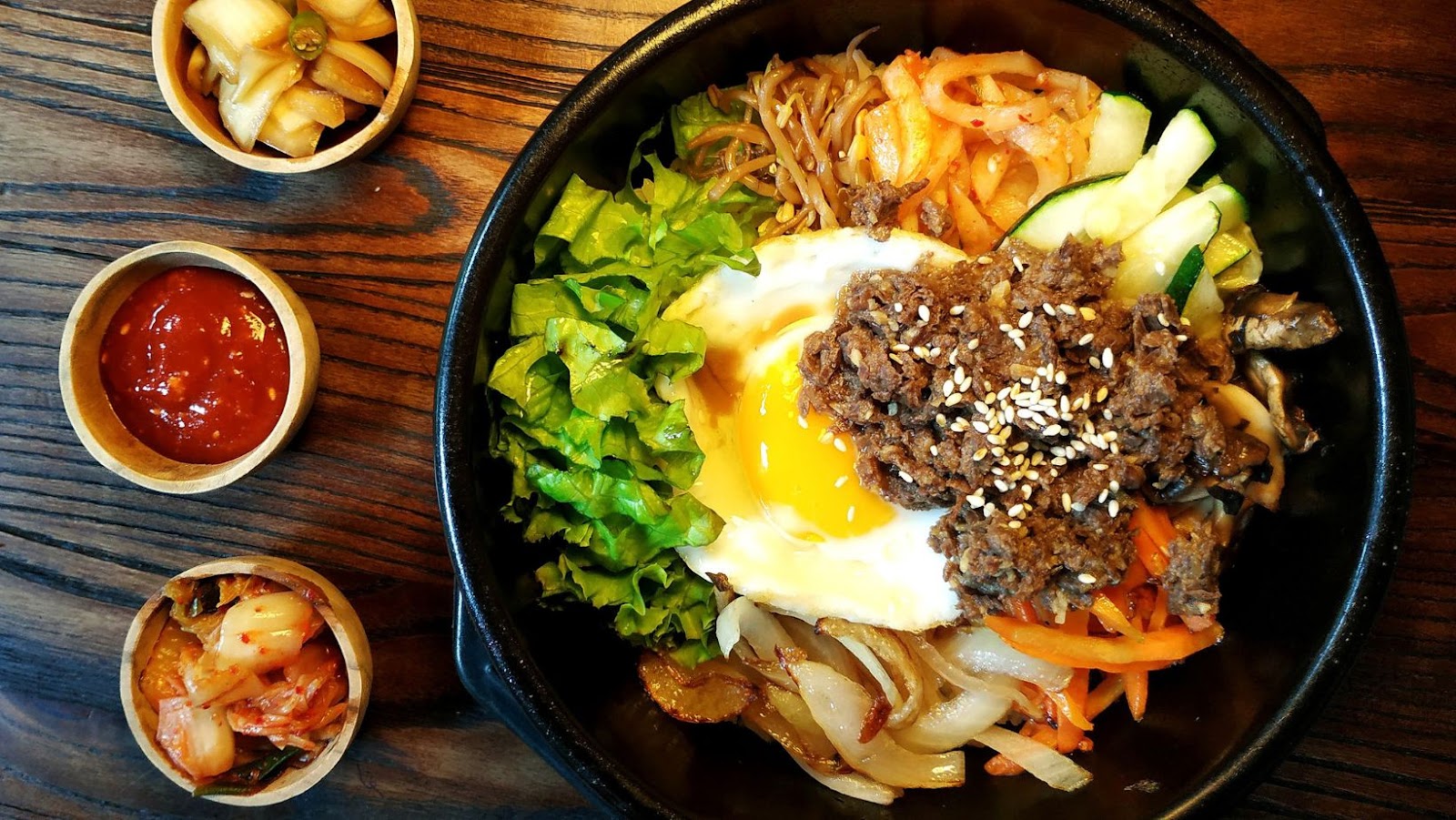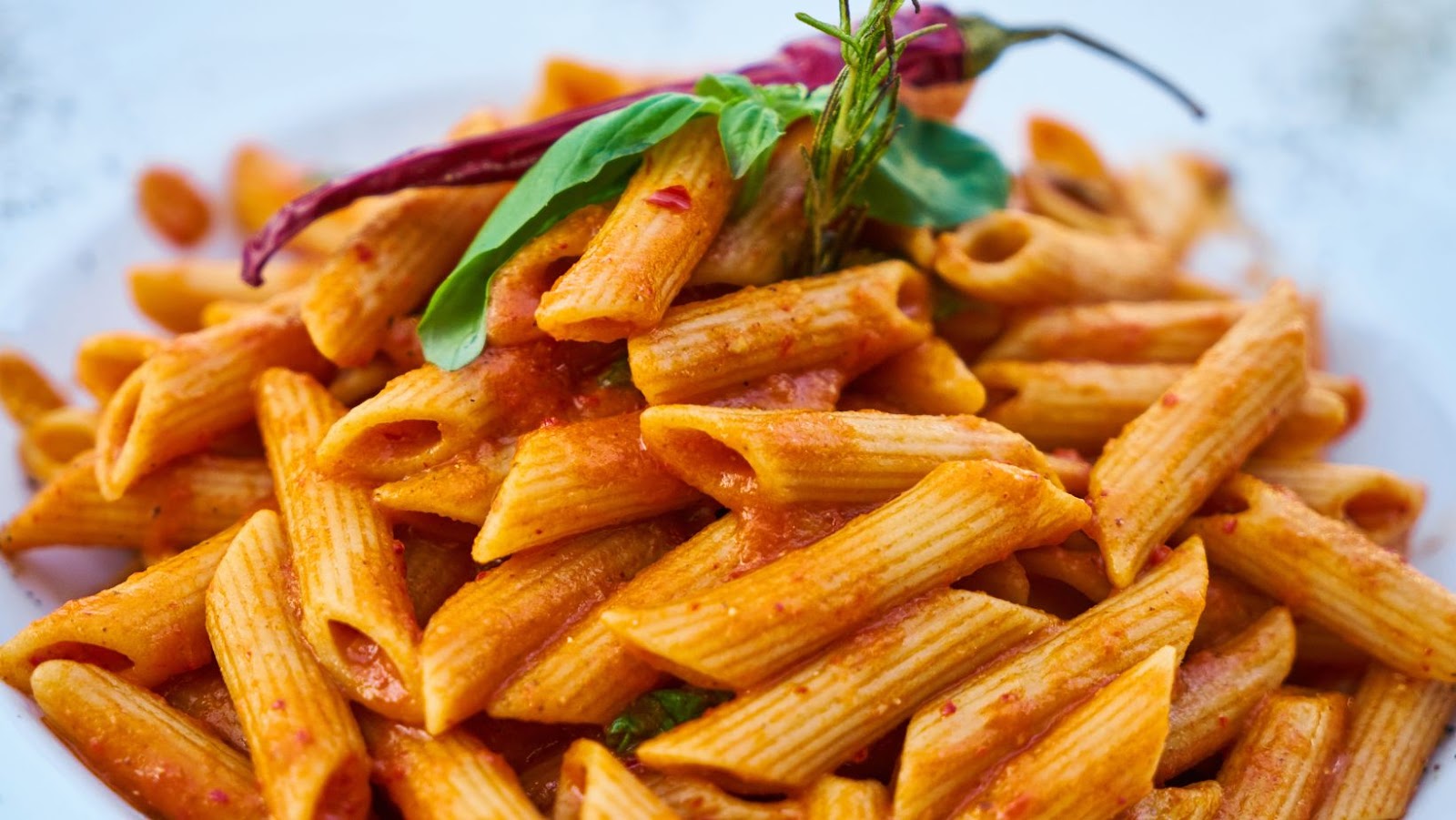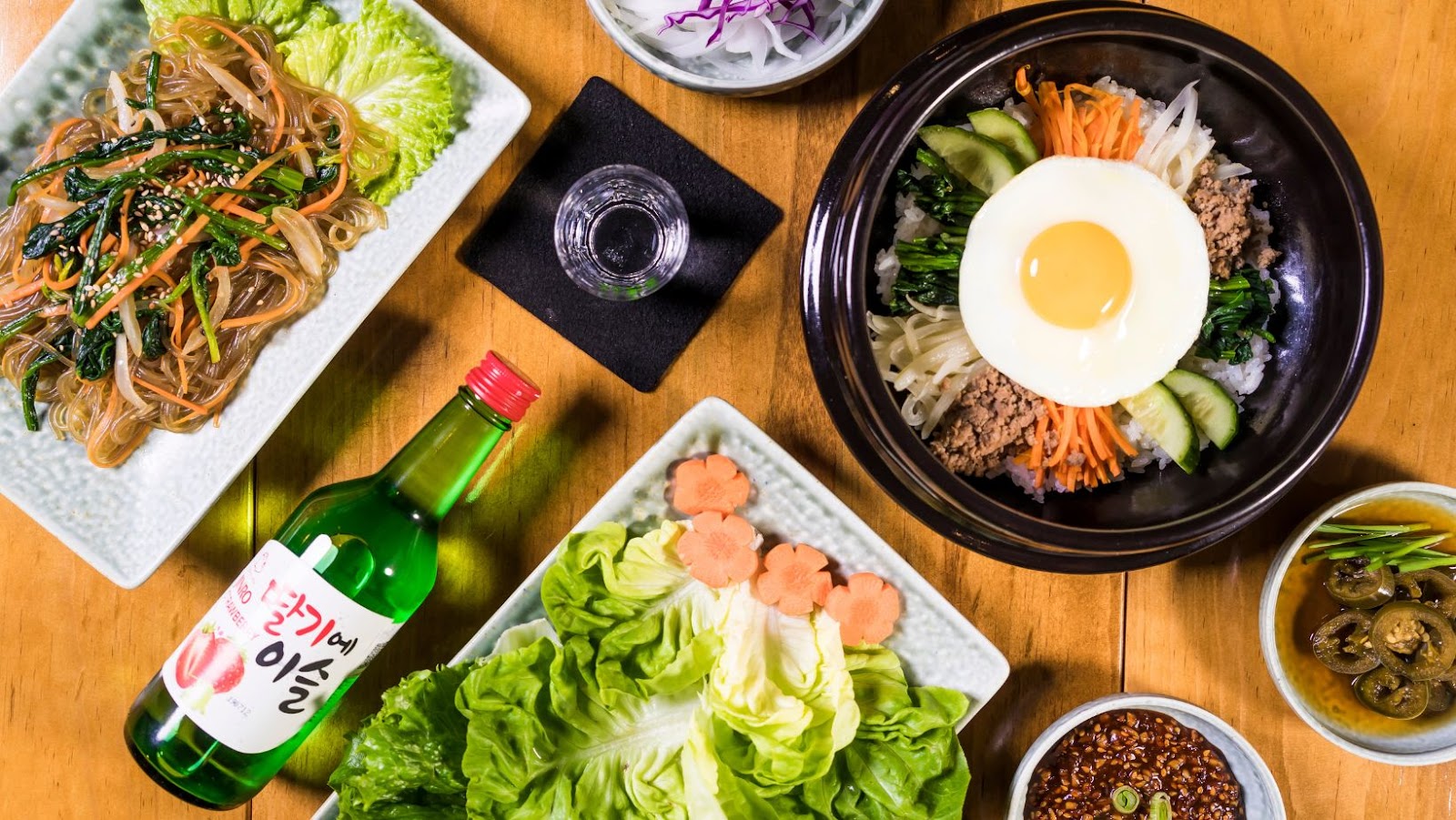
Bibimbap, a renowned traditional dish from Korea, is known for its use of gochujang, a distinctive blend of flavors and nutritious ingredients found in red pepper paste. This dish consists of a bowl of rice topped with seasoned vegetables, kimchi, fried eggs, and meat, all mixed with the spicy gochujang paste.
Why Try New Dishes?
1. Discover New Flavors
Exploring new dishes provides the opportunity to discover unfamiliar tastes and ingredients. This can unveil an entirely new realm of culinary experiences.
2. Find New Favorite Dishes
Exploring new foods can enhance your knowledge about your favorite dishes. This exploration can provide insights into various food preparation methods, thereby increasing your enjoyment of these foods. Expanding your culinary horizons can also diversify your diet, prevent you from falling into a food routine, and make your meals more exciting and pleasurable.
3. Tasty and New Meals Improve Mood
Trying something new and delicious can be a fun and effective way to lift our spirits and improve our mood. When we eat delicious food, our brains release dopamine, which makes us happy and satisfied. Our attitude often suffers from various irritants. For example, we may experience extreme mood swings, anxiety, and passivity when we face hormonal changes, such as growth hormone deficiency. Fortunately, there is a successful and easy-to-use tool, so check out the HGH pen for sale.
4. New Dish Tell a Lot About a Country and Its Culture
Every nation boasts distinctive cuisine that mirrors its traditions and customs. Certain meals stem from religious beliefs, while others are historically linked to political, scholarly, or military efforts. Sampling new dishes can offer a glimpse into a country’s culture and history, providing an enjoyable and enlightening experience for individuals and families.
5. Are Healthy Too
Exploring new foods can be a great way to incorporate more variety and nutrition into our diets. When I was in West Hollywood for example, a restaurant called Fresh Corn Grill have a set of healthy gourmet menu, and they tasted great!
What Ingredients Do We Need?
Bibimbap has a straightforward recipe that requires several ingredients. The following list of ingredients is what you will need to make the dish:
For Meat
1. 100g of Beef Mince (or other cuts) per 3.5 ounces
Beef Mince contributes both taste and protein to the meal. Other cuts of beef like sirloin or ground chuck can serve as excellent substitutes for beef mince. The final choice depends on individual palate and the accessibility of these cuts.
2. 1 Tbsp Soy Sauce
Soy sauce imparts a savory taste to the meat and enhances the other components in the Bibimbap dish. When mixed with ingredients such as sesame oil, garlic, and ginger, soy sauce forms a tasty marinade that saturates the meat with flavor. Incorporating soy sauce gives an authentic flair to your dish.
3. 1 Tbsp Sesame Oil
Sesame oil not only imparts a nutty flavor and aroma to the meat, elevating the overall taste of the Bibimbap dish, but also tenderizes the meat for a more enjoyable eating experience.

4. 1 Tsp Brown Sugar
The addition of brown sugar not only sweetens the meat but also caramelizes it, aiding in its tenderization. This is particularly crucial when dealing with tougher meat cuts, as it assists in breaking down the fibers, enhancing their palatability.
5. 1/4 Tsp Minced Garlic
Using minced garlic imparts a spicy taste to the meat. However, it’s crucial to use the correct quantity of minced garlic. Too much can dominate the dish, whereas too little might not give adequate flavor.
For Vegetables
1. 350G Seasoned Bean Sprouts
Food gains a crunchy texture and a light flavor from bean sprouts.
These sprouts are abundant in vitamins A and C and possess antioxidant properties that aid in lowering cholesterol levels and promoting heart health.
2. 100G Shiitake Mushroom Strips
The dish is enhanced with a substantial, earthy flavor by them. Shiitake mushrooms, known for their nutritional benefits, are an excellent source of protein, fiber, and vitamins.
3. 120G Carrots
The sweet and crunchy texture of carrots contributes to the dish, aiding in balancing the flavors of the meat and bean sprouts.
4. 120G Vegetable Marrows
Vegetable Marrows contribute a subtly sweet and mild flavor to the meal. They also lend a crisp texture and invigorating taste to the cuisine.
5. 1/2 Tsp Fine Sea Salt
Sea salt, with its high mineral content, adds a salty, robust taste to the recipe, enhancing the dish’s flavor.
6. 4 Serving Portions of Steamed Rice
The dish primarily consists of steamed rice. Being a nutritious grain, rice is a crucial component of numerous Korean dishes.
7. 4 Eggs (Depending on the Serving Portion)
Eggs contribute a creamy texture and protein to the dish, demonstrating their versatility in cooking various types of food. They are a superb source of protein, fat, and vitamins A and B12.
8. Use Cooking Oil
Using cooking oil not only prevents food from sticking but also enhances the flavor of the dish. It aids in cooking various ingredients like meat, mushrooms, carrots, and eggs, contributing to a delectable and savory meal. Additionally, selecting the appropriate type of cooking oil can significantly affect both the nutritional value and the taste of the dish.
Some seasoned toasted seaweed, shredded carrots, and sesame seeds.
The toasted seasoned seaweed, shredded carrots, and sesame seeds not only add a crunchy texture, flavor, and aroma to the dish but are also very low in calories and rich in fiber.
For Sauce

1. 2 Tbsp Gochujang Paste
Gochujang paste, made from red chili paste, offers a spicy and savory sauce. It also introduces a heat element to the dish.
2. 1 Tbsp Sesame Oil
The unique taste and aroma of the dish is enhanced by sesame oil, which also overpowers other ingredients.
3. 1 Tbsp Sugar
The robust, nutty flavor of sugar neutralizes the spiciness of the sauce, adding a subtle sweetness to the dish that elevates its overall taste.
4. 1 Tbsp Water
This is used to dilute the sauce, making it a bit more liquid. Water also aids in evenly distributing the sauce over the ingredients.
5. 1 Tbsp Roasted Sesame Seeds
Adding sesame seeds to a dish lends it a nutty and toasty flavor. These seeds are also packed with phytonutrients that aid in enhancing brain health and preserving heart health.
6. 1 Tsp Vinegar
It eliminates the smell of the soy sauce and introduces a sharp, tangy taste. It’s also high in acetic acid which is beneficial for your digestive system and can decrease your chances of heart issues.
7. 1 Tsp Minced Garlic
Garlic, with its high concentration of flavor, can be utilized either fresh or dried. It imparts a savory and aromatic taste to the meal.
Bibimbap is a scrumptious, nutritious Korean dish that can be relished guilt-free, without jeopardizing your health or diet. Ideal for those pursuing a low-carb diet, it boasts minimal carbohydrates and fat content. This easy-to-prepare meal is not only flavorsome but also wholesome, making it an excellent choice for any culinary lineup.



